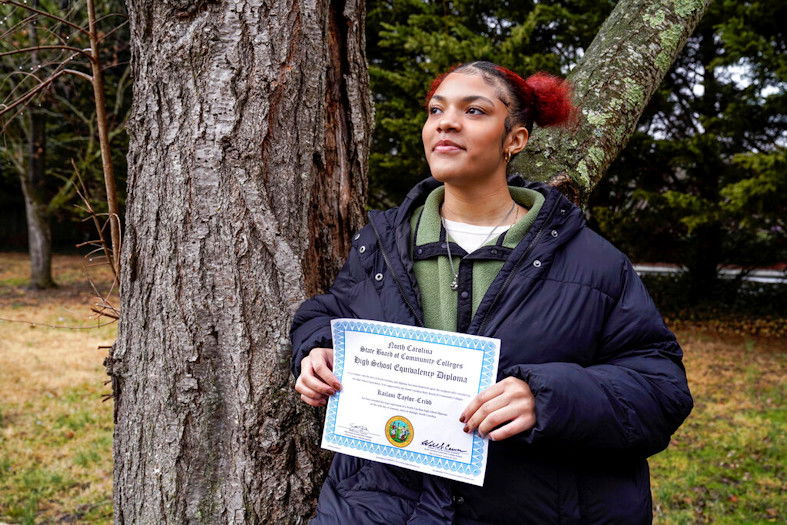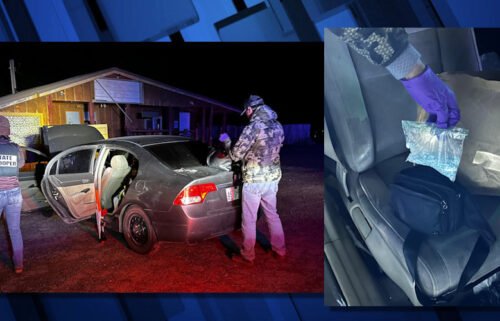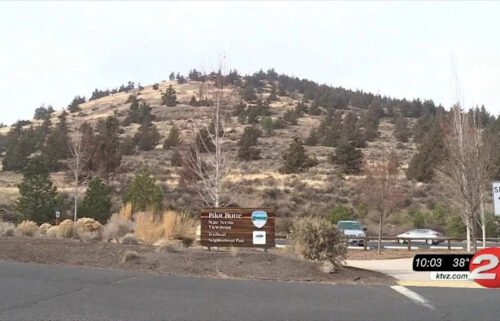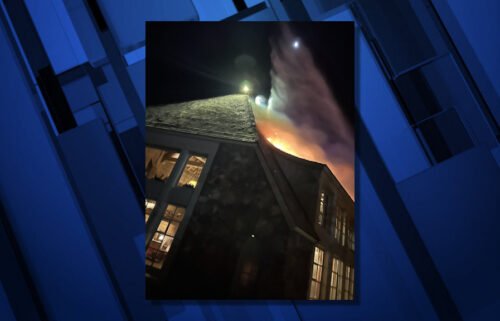The pandemic missing: The kids who didn’t go back to school

By BIANCA VÁZQUEZ TONESS and SHARON LURYE
Associated Press
She’d be a senior right now, preparing for graduation in a few months, probably leading her school’s modern dance troupe and taking art classes.
Instead, Kailani Taylor-Cribb hasn’t taken a single class in what used to be her high school since the height of the coronavirus pandemic. She vanished from Cambridge, Massachusetts’ public school roll in 2021 and has been, from an administrative standpoint, unaccounted for since then.
She is among hundreds of thousands of students around the country who disappeared from public schools during the pandemic and didn’t resume their studies elsewhere.
An analysis by The Associated Press, Stanford University’s Big Local News project and Stanford education professor Thomas Dee found an estimated 230,000 students in 21 states whose absences could not be accounted for. These students didn’t move out of state, and they didn’t sign up for private school or home-school, according to publicly available data.
In short, they’re missing.
“Missing” students received crisis-level attention in 2020 after the pandemic closed schools nationwide. In the years since, they have become largely a budgeting problem. School leaders and some state officials worried aloud about the fiscal challenges their districts faced if these students didn’t come back.
Gone is the urgency to find the students who left — those eligible for free public education but who are not receiving any schooling at all.
The missing kids identified by AP and Stanford represent more than a number. The analysis highlights thousands of students who may have dropped out of school or missed out on the basics of reading.
“That’s the stuff that no one wants to talk about,” said Sonja Santelises, the chief executive officer of Baltimore’s public schools, speaking about her fellow superintendents.
Discussion of children’s recovery from the pandemic has focused largely on test scores and performance.
“This is leading evidence that tells us we need to be looking more carefully at the kids who are no longer in public schools,” Dee said of the analysis.
Over months of reporting, the AP learned of students and families avoiding school for many reasons. Some are still afraid of COVID-19, are homeless or have left the country. Some students couldn’t study online and found jobs instead.
During the prolonged online learning, some students fell so far behind developmentally and academically they no longer knew how to behave or learn at school. Many of these students, while largely absent from class, are still officially on school rosters. That makes it harder to truly count the number of missing students.
Kailani, for one, had begun to feel alienated at her school well before the pandemic descended. As a ninth-grader, she was unhappy at home and had been moved to a different math class because of poor grades.
Kailani has ADHD and says the white teaching assistant assigned to help her focus in her new class targeted her because she was Black, blaming Kailani when classmates acted up. She eventually stopped attending math.
Ultimately, the pandemic and at-home education relieved the anxiety Kailani felt from being in the school building. When the school reopened, she never returned.
A Cambridge schools spokesperson, Sujata Wycoff, said several people showed “concern and compassion towards her and the challenges she was facing outside of school.”
To assess just how many students have gone missing, AP and Big Local News canvassed every state to find the most recently available data on public and non-public schools, as well as census estimates for the school-age population.
Overall, public school enrollment fell by over 700,000 students between the 2019-20 and 2021-22 school years in the 21 states plus Washington, D.C., that provided the necessary data.
Those states saw private-school enrollment grow by over 100,000 students. Home-schooling grew even more, surging by more than 180,000.
But the data showed 230,000 students who were neither in private school nor registered for home-school. Their absences could not be explained by population loss, either — such as falling birth rates or families who moved out of state.
California alone showed over 150,000 missing students in the data, and New York had nearly 60,000.
The true number of missing students is likely much higher. The analysis doesn’t include data from 29 states or the unknown numbers of ghost students who are technically enrolled but not receiving an education.
For some families, the problem sits within a school system they say has routinely failed their children.
Ezekiel West, 10, is in fourth grade but reads at a first grade level. Before the pandemic shutdowns, he was shuffled from school to school when educators couldn’t address his impulsive behavior.
During online learning, his mother struggled with school-provided WiFi hotspots. When he returned to school in fall 2021, he was frustrated his classmates had made more progress.
“I couldn’t really learn as fast as the other kids, and that kind of made me upset,” he said.
An administrative judge ruled Los Angeles’ schools had violated Ezekiel’s rights and ordered the district to place him at a new school, with a plan to ease him back into learning and trusting teachers. The school didn’t follow the plan, so his mother stopped sending him in October.
“I can’t trust them,” Miesha Clarke said. Los Angeles school officials did not respond to requests for comment on Ezekiel’s case.
Last month, Ezekiel signed up for a public online school. To enroll him, his mother agreed to give up his special education plan. His attorney, Allison Hertog, worries the program won’t work for someone with Ezekiel’s needs and is looking for yet another option.
When Kailani stopped logging into her virtual classes, she received several emails from the school telling her she’d been truant. The school’s dean of students called her great-grandmother, her legal guardian, to inform her.
They didn’t communicate further, according to Kailani. She went to work at Chipotle, ringing up orders in Boston’s financial district.
In December, Kailani moved to North Carolina to make a new start. She teaches dance to elementary school kids. Last month, she passed her high school equivalency exams.
While she has no regrets about leaving high school, she says she might have changed her mind if someone at school had shown more attention to her needs and support for her as a Black student.
“There were so many times they could have done something,” Kailani said. “And they did nothing.”
___
This article is based on data collected by The Associated Press and Stanford University’s Big Local News project. Data was compiled by Sharon Lurye of the AP, Thomas Dee of Stanford’s Graduate School of Education, and Justin Mayo of Big Local News.
___
The Associated Press education team receives support from the Carnegie Corporation of New York. The AP is solely responsible for all content.
___
Due to an update to one state’s enrollment figures, this story has been corrected to change the estimated number of missing schoolkids in all states from 240,000 to 230,000.



